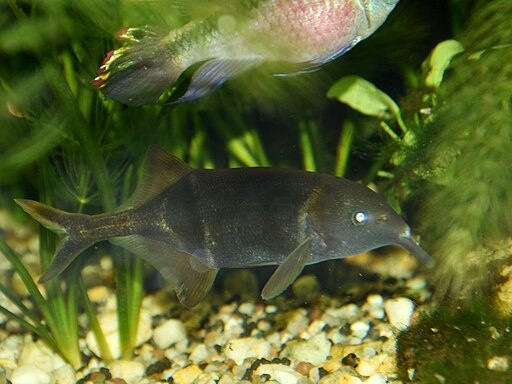In the animal kingdom, body movement is an important skill many species use in perceiving their environment. It enables them to successfully carry out tasks such as escaping predators, sensing prey, and navigating through space.
Sighted animals use color as a reliable cue in identifying objects. However, there are species, such as elephantnose fish, which cannot rely on their eyes to sense their environment.

Unique Ability of Elephantnose Fish
Peter's elephantnose fish (Gnathonemus petersii) is an African freshwater fish with a highly unusual look. Also known as Ubangi mormyrid, these fish are characterized by long gray bodies with elongated noses.
As nocturnal organisms that do not rely on their eyes, elephantnose fish carry an "electric flashlight" in their tail. They use it to generate short electrical pulses up to 80 times per second. Meanwhile, their skin, especially around their trunk-like chin, is covered with electroreceptors or small sensors to measure how the environment reflects the pulses.
Elephantnose fish use this electro-sense in distinguishing forms and materials, estimating distances, and differentiating between dead and living objects. In just fractions of a second, they can recognize whether their favorite food, mosquito larvae, is hiding in the gravel or sand. They can do this accurately while ignoring the larvae of other insects.
For a long time, it was uncertain how elephantnose fish did this task. Objects change the intensity of the electrical signal characteristically; some reduce it while others reflect it better. However, this is not enough to identify their prey.
Investigating the Electric Boogie
A team of scientists from the University of Bonn has shown how well this mechanism works. It was found that the localization sense of elephantnose fish bears similarity to vision where they differentiate between the "electrical colors" of objects.
It is known that this species has two different types of electric receptors, one measures the intensity of the electrical signal, while the other measures its shape. Led by Professor Gerhard von der Emde, the research team demonstrated how elephantnose fish use the relation between these two measurements in identifying their prey.
The researchers first determined how the intensity and shape of the localization signal behave about each other based on the type of object. They discovered that this ratio is always constant for the same things. This also applies regardless of their distance or other environmental parameters. This means that as elephantnose fish look for food, they sense mosquito larvae as having a constant electrical color that is different from that of other larvae, plants, or other fish species.
The team then investigated the extent to which elephantnose fish use this information. The animals under study were presented with different electronic "mini chips" that measure one millimeter in diameter. Some chips produced various electrical colors, while others were electrically 'colorless' like pebbles.
The result of this study reveals the nature of electric color as provided by plants and animals. It also suggests the role of color perception as a sensory concept beyond vision and passive sensing.
RELATED ARTICLE : Experts Found How Electric Fish Developed Unique Skill Through Genetic Evolution, Potential Key to Solve Human Diseases
Check out more news and information on Electric Fish in Science Times.
© 2026 ScienceTimes.com All rights reserved. Do not reproduce without permission. The window to the world of Science Times.












